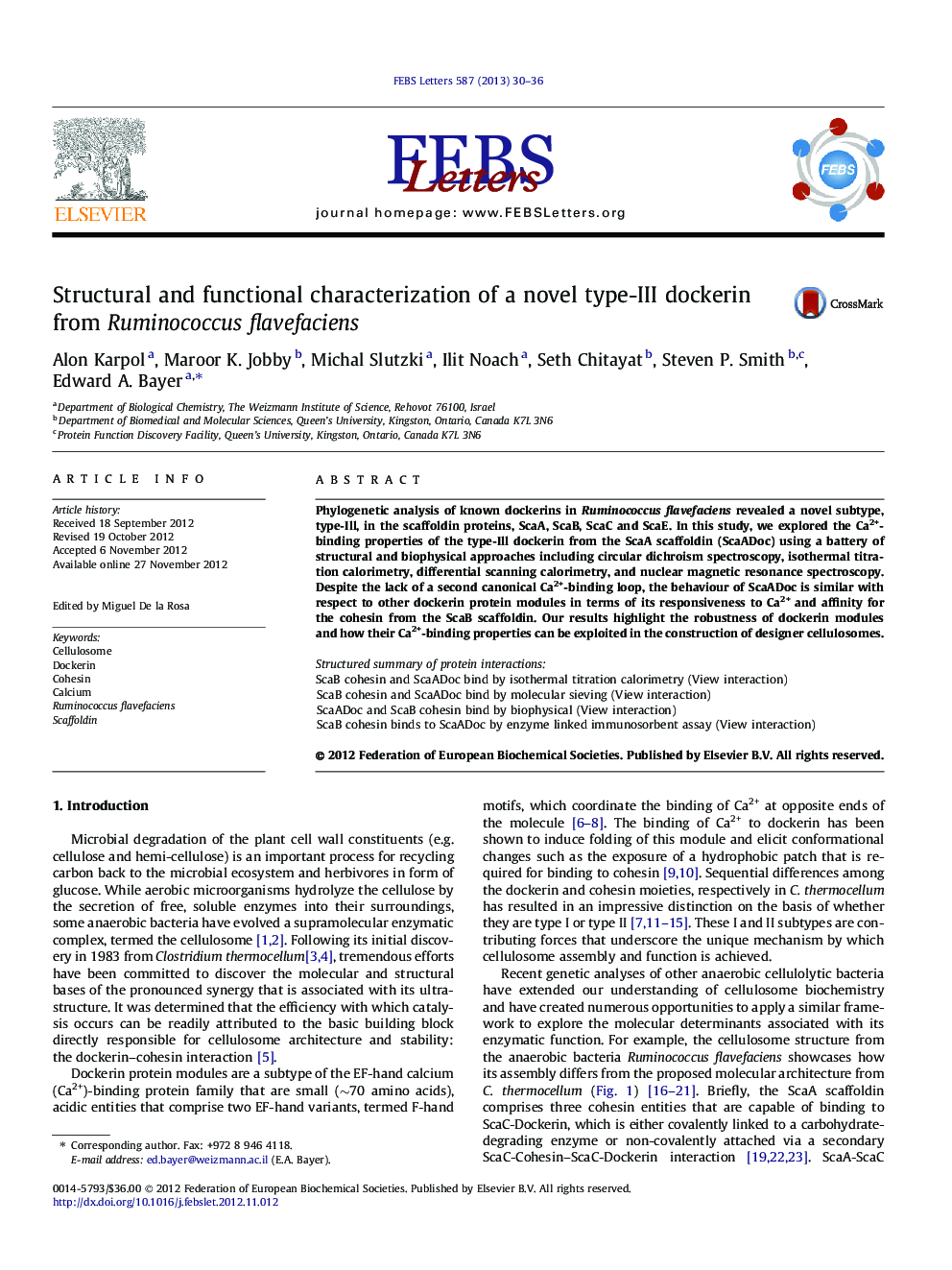| Article ID | Journal | Published Year | Pages | File Type |
|---|---|---|---|---|
| 2047837 | FEBS Letters | 2013 | 7 Pages |
Phylogenetic analysis of known dockerins in Ruminococcus flavefaciens revealed a novel subtype, type-Ill, in the scaffoldin proteins, ScaA, ScaB, ScaC and ScaE. In this study, we explored the Ca2+-binding properties of the type-Ill dockerin from the ScaA scaffoldin (ScaADoc) using a battery of structural and biophysical approaches including circular dichroism spectroscopy, isothermal titration calorimetry, differential scanning calorimetry, and nuclear magnetic resonance spectroscopy. Despite the lack of a second canonical Ca2+-binding loop, the behaviour of ScaADoc is similar with respect to other dockerin protein modules in terms of its responsiveness to Ca2+ and affinity for the cohesin from the ScaB scaffoldin. Our results highlight the robustness of dockerin modules and how their Ca2+-binding properties can be exploited in the construction of designer cellulosomes.Structured summary of protein interactionsScaB cohesin and ScaADocbind by isothermal titration calorimetry (View interaction)ScaB cohesin and ScaADocbind by molecular sieving (View interaction)ScaADoc and ScaB cohesinbind by biophysical (View interaction)ScaB cohesinbinds to ScaADoc by enzyme linked immunosorbent assay (View interaction)
► ScaADoc binds calcium (Ca2+) with micromolar affinity and a 1:1 stoichiometry. ► ScaADoc exhibits similar solution behavior in relation to type I and II dockerins. ► Increased thermostability of ScaADoc in 1:1 heterocomplex with ScaB cohesin. ► C-terminal fragment of ScaADoc makes important contacts to surface of ScaB cohesin.
